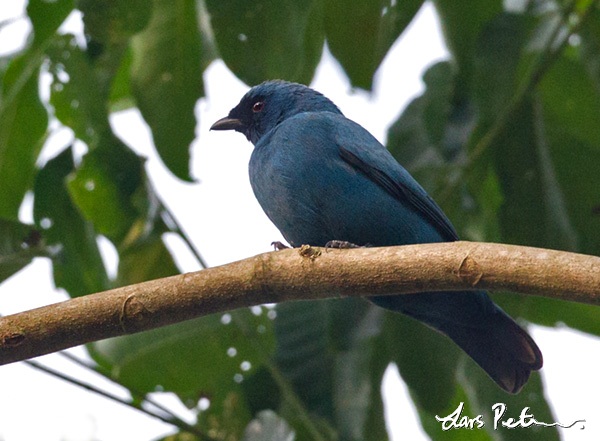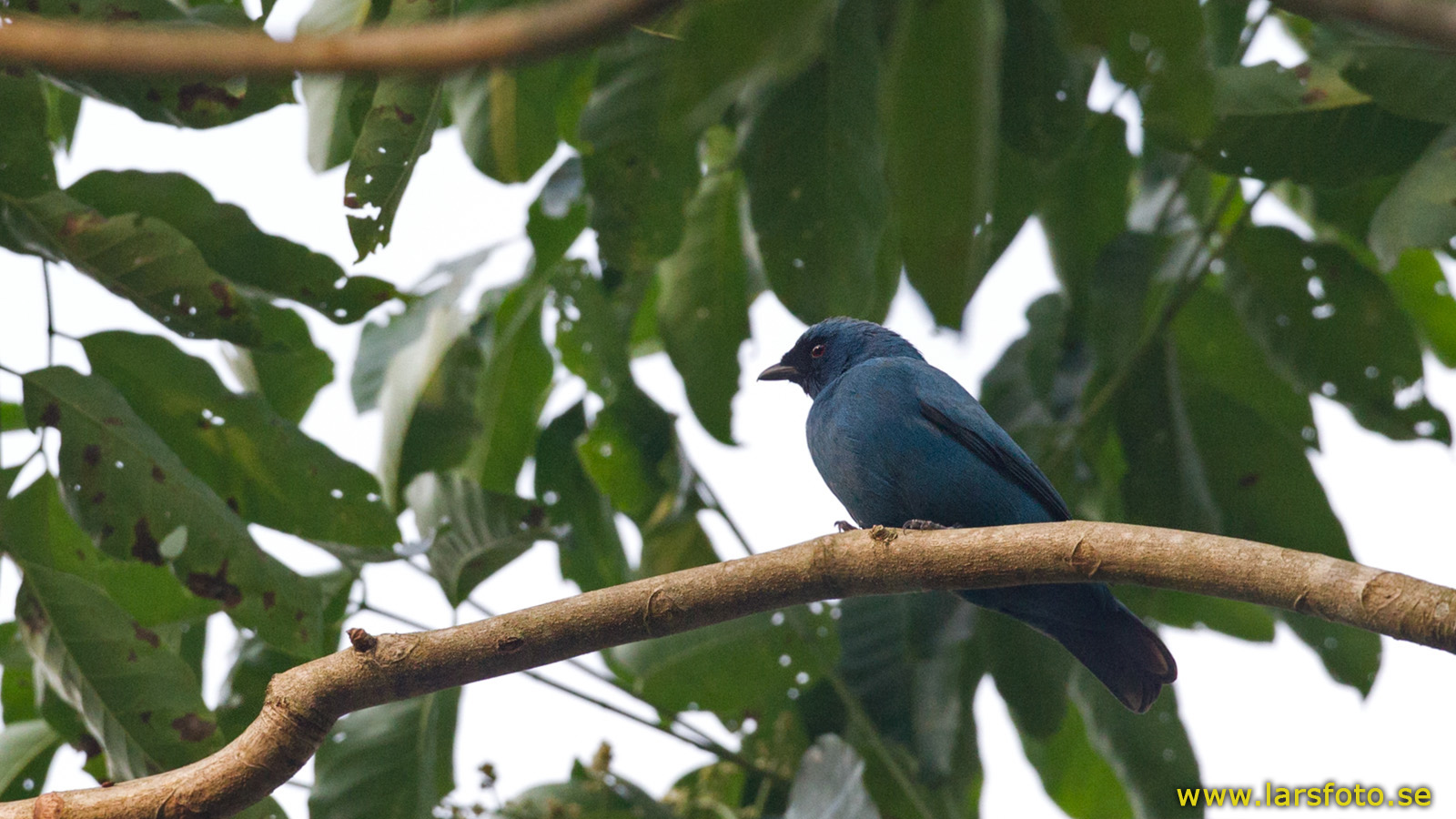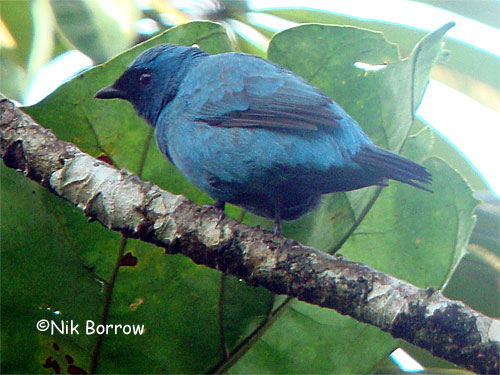
Coracina azurea
TAXONOMY
Graucalus azureus Cassin, 1852, Sierra Leone.
OTHER COMMON NAMES
French: Echenilleur bleu; German: Azurraupenfдnger; Spanish:
Oruguero Azul Africano.
PHYSICAL CHARACTERISTICS
8.5 in (21.5 cm); 1.5–1.8 oz (43–51 g). Bright blue plumage
with black mask, flight feathers, and tail. Eyes red. Female has
duller, green-blue forehead and wings.
DISTRIBUTION
Sierra Leone, Liberia, southwest Cфte d’Ivoire, south Ghana
and south Nigeria to southwest Cameroon, Gabon, southwest
Central African Republic, north and central DRC and northwest
Angola.
HABITAT
Canopy of lowland primary and secondary forest; also open
woodland and sometimes clearings.
BEHAVIOR
Territorial. Unobtrusive and easily overlooked despite its
bright blue color, but its powerful “peeeoo” calls advertise its
presence. It joins mixed-species bird parties.
FEEDING ECOLOGY AND DIET
Eats caterpillars, grasshoppers, termites, beetles, snails, and occasionally
small fruit. Forages like a flycatcher, snatching prey
in the air and from foliage; also gleans.
REPRODUCTIVE BIOLOGY
Monogamous. Breeds November–March, when rainfall is relatively
low. Nest is a loose bowl of lichens and spider webs on a
horizontal tree branch.
CONSERVATION STATUS
Not threatened. Its known range is fragmented, and it has suffered
considerably from habitat destruction. In the 1980s, it
was still locally frequent to common in some parts of its range.
SIGNIFICANCE TO HUMANS
None known.
Photo Gallery of - Blue cuckoo-shrike




 Animalia Life
Animalia Life